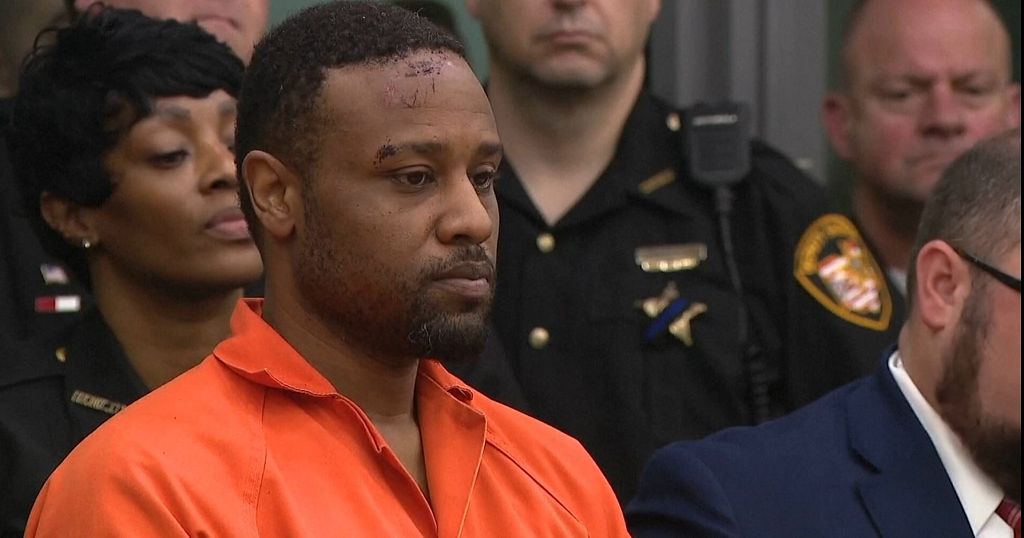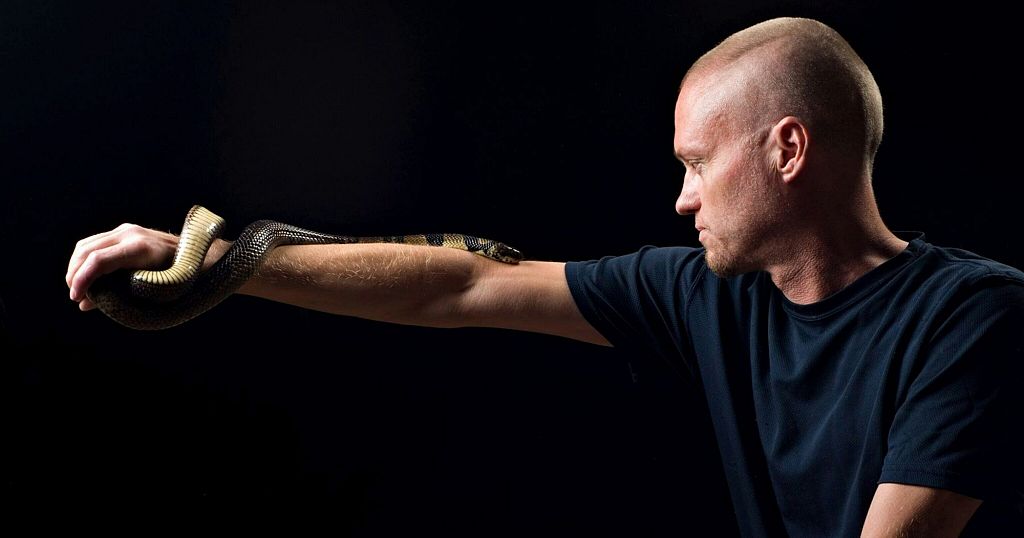Africa
Protesters want Morocco to sever ties with Israel, target strategic ports

More than a year of protests over Morocco’s decision to normalize ties with Israel has emboldened activists and widened a gap between the decisions of the government and the sentiments of the governed. The fury has spilled into the country’s strategic ports.
Amid shipping cranes and stacked containers, 34-year-old agricultural engineer Ismail Lghazaoui marched recently through a sea of Palestinian flags and joined protesters carrying signs that read “Reject the ship,” in reference to a vessel transporting fighter jet components from Houston, Texas.
Activists are urging Moroccan port officials to try to block ships carrying military cargo to Israel, much like Spain did last year. Protests often target Danish shipping company Maersk, which helps transport components used to make Lockheed Martin’s F-35 as part of the U.S. Defense Department’s Security Cooperative Participant Program that facilitates weapons sales to allies including Israel.
A similar boycott campaign landed Lghazaoui in prison last year, but that didn’t deter him from turning out again for resurgent protests last month, after his release. Lghazaoui is one of more than a dozen activists pursued by Moroccan authorities for criticizing the government’s ties with Israel.
During a rally in November in Casablanca where Lghazaoui spoke, plainclothes officers beat him and others to prevent them from advancing toward the U.S. Consulate, he said. He later posted about Maersk on social media and was arrested and charged with incitement. Originally sentenced to a year, he served two months in prison and two on parole after the term was reduced.
“They try to silence people,” Lghazaoui told The Associated Press. “They were using me to dissuade people or to push people away
Africa
DRC: M23 rebels seize strategic town despite peace talks

Despite ongoing peace talks in Doha, M23 militants and their allies fighting Democratic Republic of Congo government forces in the east of the country have seized the strategic town of Lunyasenge.
It is being reported that the battle in the town on the western shore of Lake Edward left at least 17 people dead, including 7 Congolese soldiers.
The insurgents have taken control of much of the eastern part of the country since January.
Both sides recently called for a ceasefire, but clashes have continued in North Kivu, South Kivu, and Ituri, with the M23 seizing an increasing number of villages.
A DRC army spokesperson has described the recent attack as a “flagrant violation” of the truce, saying the military reserves the right to respond if the threat persists.
Delegations from both the rebel coalition and the government are currently in the Qatari capital trying to reach an agreement to end the fighting.
Millions of people have been displaced by the ongoing clashes which have worsened an already dire humanitarian situation.
Amid fears that the conflict could spread beyond the DRC’s borders, the Doha talks are seen as critical in determining the region’s future.
Africa
United States: Father of teenager fatally shot by police charged with killing officer

The city of Cincinatti, Ohio, in the United States, has been the scene of two high-profile killings in the past week.
A man appeared in court on Saturday, a day after he struck and killed a police officer with his car. Authorities said the crash seemed to be intentional. The driver of the car, 38-year-old Rodney Hinton Jr., was charged with aggravated murder.
The victim of the crash was identified as Deputy Larry Henderson. He retired a few months ago after working 33 years with the Hamilton County Sheriff’s office, but he continued to serve off-duty assignments, according to Hamilton County Sheriff Charmaine McGuffey.
Ohio governor Mike DeWine said on X that he was “sickened by what appears to be an intentional act of violence.”
But Rodney Hinton Jr. is also the father of a teenager who was killed by a Cincinnati police officer on Thursday.
Police fatally shot 18-year-old Ryan Hinton during a chase, after officers responded to a call about a stolen car.
The officer who fired told investigators that the suspect pointed a gun at him during the chase, said Cincinnati’s police chief Teresa A. Theetge.
Body camera video released on Friday showed one officer yelling “he’s got a gun, he’s got a gun” before several shots were fired as Ryan Hinton was running behind an apartment complex.
The footage from the body camera is blurry and does not clearly show Ryan Hinton pointing a gun. There was also no indication that he fired at police before he was shot, Theetge said.
Rodney Hinton Jr. and other family members met at the police chief’s office the morning after the shooting and watched the police body camera video showing the killing of the teenager.
Hinton could not make it through the entire video. “He was distraught, he was upset”, said Michael Wright, the Hinton family attorney. “I can’t tell you whether he was angry. He was just kind of upset, despondent, really upset by what he saw.”
A few hours later, he fatally drove into a county deputy who was directing traffic near the University of Cincinnati on graduation day.
“I do have a plea to everybody, let the processes play out. Let the investigations play out. Keep calm. Take care of one another. And I can assure you as the chief of police for Cincinnati, I will ensure you transparency and a thorough and accurate investigation”, said Theetge.
Motivations for Hinton’s alleged targeting of the deputy have not been disclosed. The deaths of both the police officer and the teenager remain under investigation.
An attorney representing Rodney Hiton Jr. said in court that he has no prior felonies, local news outlet WLWT reported.
He will face another hearing on Tuesday.
Africa
Snake Man: His Immunity Might Cure Bites

If you’re afraid of snakes then look away now. Tim Friede from Wisconsin, USA is certainly not afraid of snakes and has been bitten hundreds of times — often on purpose. Now scientists are studying his blood in the hope of creating a better treatment for snake bites.
Friede has long had a fascination with reptiles and other venomous creatures. He used to milk scorpions’ and spiders’ venom as a hobby and kept dozens of snakes at his Wisconsin home. Hoping to protect himself from snake bites — and out of what he calls “simple curiosity” — he began injecting himself with small doses of snake venom and then slowly increased the amount to try to build up tolerance. Friede explains his method: “I take it out and I basically let it bite my arm. And the reason I do that is for shock value to bring awareness for snakebite.
Nobody wants to see me just inject a lethal dose. That’s boring. So what I did is I intentionally got bit to prove a point and film it, to represent the people that die from snakebites. I wasn’t looking to be a YouTube star or anything like that. It’s all about the science for me, 100%.” It falls under the category of ‘DON’T TRY THIS AT HOME’ and no doctor or emergency medical technician — or anyone, really — would ever suggest this is a good idea, but experts say his unorthodox method tracks how the body works. When the immune system is exposed to the toxins in snake venom, it develops antibodies that can neutralize the poison.
If it’s a small amount of venom the body can react before it’s overwhelmed. And if it’s venom the body has seen before, it can react more quickly and handle larger exposures. Friede has withstood snakebites and injections for nearly two decades and still has a refrigerator full of venom. In videos posted to his YouTube channel, he shows off swollen fang marks on his arms from black mamba, taipan and water cobra bites. But Friede also wants to help. He emailed every scientist he could find, asking them to study his body and the immunity he’d built up. And there is a need: Around 110,000 people die from snakebite every year, according to the World Health Organization. Making antivenom is expensive and difficult. It is often created by injecting large mammals like horses with venom and collecting the antibodies they produce.
These antivenoms are usually only effective against specific snake species, and can sometimes produce bad reactions due to their non-human origins. Peter Kwong from Columbia University says: “So in this study, what we’re really excited about are two things. First, we might have a working cocktail that could be developed in a few years, but also it shows what the human immune system can do.
We have antibodies produced in a human that might save other humans moving forwards in terms of a universal antivenom.” In a study published in the journal Cell, Kwong and collaborators shared what they were able to do with Friede’s unique blood: They created an experimental antivenom that they hope could one day treat bites from many different snake species. “So Tim basically created a procedure that allowed broad recognition of many, many different toxins moving forward, and that recognition allowed him to be protected from snakebites, and what we’re hoping to do is take that same protection but not have to have everyone undergo 18 years of immunization and snake bites, ultimately. But instead, isolate and identify the best antibodies.
Or we can combine with small molecules to create anti-venom from Tim’s amazing blood,” says Kwong. It’s very early research — the antivenom was only tested in mice, and researchers are still years away from human trials. And even though their experimental treatment shows promise against the group of snakes that include mambas and cobras, it’s not effective against vipers, which include snakes like rattlers. “I picked the most dangerous ones in the world, black mambas, taipans, cobras, kraits, coral snakes, rattlesnakes.” says Friede. “I couldn’t get every single snake I wanted to have. Some you just can’t get. And I don’t like taking stuff out of the wild. So, you know, I had to pick and choose.” Friede’s journey has not been without its missteps.
Among them: He said after one bad snake bite he had to cut off part of his finger and some particularly nasty cobra bites sent him to the hospital. Friede explains the risks he has faced: “I had no antivenom. I worked with no doctors. Well, I do now, but back then I didn’t, I just had so much confidence on what I was doing to where I didn’t want to back up. And it made me stronger and better at what I did because I depended on myself.
And if I failed and I died, then I die, I mean, it was that simple. It became a lifestyle actually.” Friede is now employed by Centivax, which is trying to develop the treatment, and he’s excited that his 18-year odyssey could one day save lives from snakebite. “When I was doing it, I sat back after about a year and just realised that people died from snakebite and I wasn’t dying. So at that point I decided I have to reach out to every scientist on the planet. Which I did, reached out to a lot of them. Can you study me? What can we do to save people from snake bite? And that just escalated like crazy. It just went nuts, for good reasons though. I became the horse. I took the horse out the picture. And that’s how they make anti-venom, in horses. So I used myself,” he says.
But his message to those inspired to follow in his footsteps is quite simple: “Don’t do it!” But if one day his blood could save lives, then it’s been worth it. “It’s nice to be part of something that changes medical history, herpetology, immunology, and science,” says Friede. Friede could be making hiss-tory.
-

 Conflict Zones2 days ago
Conflict Zones2 days agoHouthis maintain pressure on Israel as US launches more strikes on Yemen | Politics News
-

 Europe2 days ago
Europe2 days agoTrump draws criticism with AI image of himself as the pope ahead of the papal conclave
-

 Middle East2 days ago
Middle East2 days agoCanelo Alvarez beats Scull to reclaim undisputed super-middleweight title | Boxing News
-

 Europe2 days ago
Europe2 days agoFour Iranians among five arrested in UK over alleged terror plot
-

 Middle East2 days ago
Middle East2 days agoIsraelis protest for captives, against Netanyahu’s Gaza war expansion | Israel-Palestine conflict News
-

 Lifestyle2 days ago
Lifestyle2 days agoRain Barrel Village gives visitors a taste of old Florida and a photo op with a giant lobster
-

 Europe1 day ago
Europe1 day agoFather of crypto entrepreneur rescued from kidnappers after having finger severed
-

 Europe2 days ago
Europe2 days agoUkraine claims it destroyed Russian fighter jet using seaborne drone for the first time




